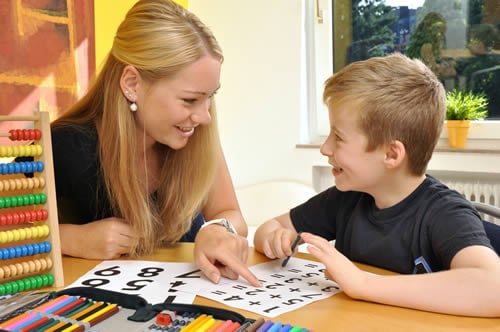We’ve all seen films and TV dramas where a corduroy-clad teacher strolls into a classroom, perches on the edge of their desk and nonchalantly delivers an inspiring and informative lesson without so much as glancing at a piece of paper.
Needless to say, the reality is very different. Most teachers work very hard to plan their lessons in great detail, focusing on certain outcomes and preparing a range of related activities which are tailored to the pupils’ individual abilities.
SEN Tutor Sheree has worked with children with a variety of special needs including Down’s Syndrome and autism but started out as a teacher in a mainstream school. “When I first qualified, I was very anxious about sticking to what I’d planned,” she admits, “but I soon realised that sometimes lessons are interrupted or you go off at a tangent. I learned it’s OK for things not to go to plan.”
Thinking on Your Feet

In fact, this flexible approach has proved very helpful over the years when tutoring SEN students, she says, as their behaviour can be unpredictable. “I started working with one boy, for example, who was so anxious that he wouldn’t leave the house,” she recalls. “For the first week, all I did was sit in their front room, watching him play his favourite computer game. After a couple of weeks, we moved on to doing some drawing connected to the game and then some writing. It wasn’t what I’d planned but it was important to get to know him and build a rapport.
“In the same way, I’ve learned not to put pressure on myself,” Sheree continues. “Society tells you that kids should be a certain way or learn at a particular speed but that’s not always possible. By removing these expectations, I’ve found the tension drops away with the student as well and things start to fall into place.”
Some Kids Thrive With Timetables

But how far should a tutor share their objectives with a student? Does it help a child to know what they will be doing during a lesson or does that make learning feel oppressive rather than fun?
It depends on the individual, says Francesca, a tutor with particular experience working with autism, selective mutism and dyslexia. “Some ASD kids thrive with visual timetables where they can see what their targets are. If you write them on a whiteboard, for example, they can wipe them off when they’ve completed a task and earn a reward. You can also get them to decorate their timetable with things they’re interested in such as Minecraft, or Pokémon. You’ve got to make it fun.”
Even so, she adds, some children like a timetable but with minimal information as they may feel overwhelmed by too many words or pictures. And for young people who want to stick too rigidly to the schedule and feel anxious at any deviation, the tutor will need to reassure them that the planned activities will take place at another time.
Lesson Plans Make Some Children More Anxious

Sheree agrees that timetables can be useful for kids with high anxiety but points out that some anxious students – for example, those with pathological demand avoidance (PDA) – find schedules are too much to ‘live up to’ and that they actually increase a feeling of dread.
“Collaboration is very important with PDA students,” she points out. “You have to build a sense of trust. With one of my pupils, for example, I never show her any kind of visual timetable as she would be overwhelmed, though I gently tell her small components of what we’re doing as we go along.
“She’s working towards her GCSEs so I am slowly building up the pressure as she’ll need to be able to cope with exams,” Sheree continues. “I worked with her for two months before I even mentioned the word ‘homework’. I said, ‘You can do this if you want to and you can also change your mind’. I only wanted her to do one question but she did them all in the end! Giving PDA students a sense of choice is crucial.”
Avoidant kids can also experience praise as pressure so when they’ve completed a piece of classroom work, it’s better to keep your voice level and say, ‘You’ve done that, now,’ in a matter-of-fact way, Francesca advises.
Children with selective mutism can also react against visual timetables, Sheree adds. “There’s a reason they’ve chosen not to speak so you have to bear in mind that too much language can be overwhelming for them.”




